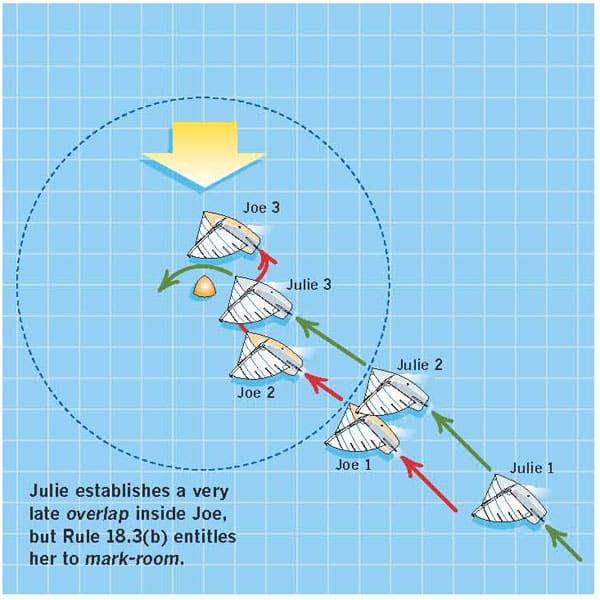
A Right-of-Way Mystery Solved
Two reader questions give the rules a workout and point out a few features not covered in any beginner’s guide to the rules. “Rules” from our October 2010 issue.

Two reader questions give the rules a workout and point out a few features not covered in any beginner’s guide to the rules. “Rules” from our October 2010 issue.

Writing a fair and simple set of rules to get a fleet around the marks is undoubtedly the most challenging task that the writers of rules face. Take a look at these two situations. “Rules” from our June 2011 issue.

When it comes to dealing with protest and race committees, your rights are clearly defined. “Rules” from our September 2010 issue.

Kiteboard racing is different, and so are its rules. “Rules” from our November/December 2009 issue.

When the rules are not clear-cut, judgment is required. “Rules” from our October 2009 issue.

To ensure a positive outcome in your next protest hearing, take proactive steps on the water and, once ashore, get your case in order. “Rules” from our November/December 2010 issue.

Encouraging the use of international navigational rules for casual racing may seem like a simple solution, but they fail to address the sport’s complicated nuances. “Rules” from our November/December 2011 issue.

A few Part 2 rules almost never apply, but when they do, they can be important. “Rules” from our October 2011 issue.

When you’re required to go on the offensive to ensure you beat another competitor in the final race, it helps to be aware of the rules of engagement. Rules from our September 2011 issue.

Brush up on three common mark-rounding scenarios. Rules from our July/August 2011 issue.

Rather than actually file a protest, it’s a lot easier to just whine about the rule breakers, the cheaters, and the indignant victims who only compound the rules-compliance problem.

In the heat of competition, what you say is as important as when, and how you say it.

Two reader questions give the rules a workout and point out a few features not covered in any beginner’s guide to the rules. “Rules” from our October 2010 issue.

Writing a fair and simple set of rules to get a fleet around the marks is undoubtedly the most challenging task that the writers of rules face. Take a look at these two situations. “Rules” from our June 2011 issue.

When it comes to dealing with protest and race committees, your rights are clearly defined. “Rules” from our September 2010 issue.

Kiteboard racing is different, and so are its rules. “Rules” from our November/December 2009 issue.

When the rules are not clear-cut, judgment is required. “Rules” from our October 2009 issue.

To ensure a positive outcome in your next protest hearing, take proactive steps on the water and, once ashore, get your case in order. “Rules” from our November/December 2010 issue.

Encouraging the use of international navigational rules for casual racing may seem like a simple solution, but they fail to address the sport’s complicated nuances. “Rules” from our November/December 2011 issue.

A few Part 2 rules almost never apply, but when they do, they can be important. “Rules” from our October 2011 issue.

When you’re required to go on the offensive to ensure you beat another competitor in the final race, it helps to be aware of the rules of engagement. Rules from our September 2011 issue.

Brush up on three common mark-rounding scenarios. Rules from our July/August 2011 issue.

Rather than actually file a protest, it’s a lot easier to just whine about the rule breakers, the cheaters, and the indignant victims who only compound the rules-compliance problem.

In the heat of competition, what you say is as important as when, and how you say it.
Sign up for Sailing World emails to receive features on travel destinations, event listings and product reviews as well as special offers on behalf of Sailing World’s partners.
By signing up you agree to receive communications from Sailing World and select partners in accordance with our Privacy Policy. You may opt out of email messages/withdraw consent at any time.